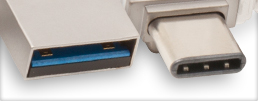
| HDMI FORUM RELEASES VERSION 2.1 OF THE HDMI SPECIFICATION |
| 2017-11-28 |
SAN JOSE, California – November 28, 2017 - HDMI Forum, Inc. today announced the release of Version 2.1 of the HDMI® Specification which is now available to all HDMI 2.0 adopters. This latest HDMI Specification supports a range of higher video resolutions and refresh rates including 8K60 and 4K120, and resolutions up to 10K. Dynamic HDR formats are also supported, and bandwidth capability is increased up to 48Gbps. Supporting the 48Gbps bandwidth is the new Ultra High Speed HDMI Cable. The cable ensures high-bandwidth dependent features are delivered including uncompressed 8K video with HDR. It features exceptionally low EMI (electro-magnetic interference) which reduces interference with nearby wireless devices. The cable is backwards compatible and can be used with the existing installed base of HDMI devices. Version 2.1 of the HDMI Specification is backward compatible with earlier versions of the specification, and was developed by the HDMI Forum’s Technical Working Group whose members represent some of the world’s leading manufacturers of consumer electronics, personal computers, mobile devices, cables and components. “The HDMI Forum’s mission is to develop specifications meeting market needs, growing demands for higher performance, and to enable future product opportunities,” said Robert Blanchard of Sony Electronics, president of the HDMI Forum. HDMI Specification 2.1 Features Include:
The HDMI 2.1 Compliance Test Specification (CTS) will be published in stages during Q1-Q3 2018, and HDMI adopters will be notified when it is available. The HDMI Forum Reaches Out to Grow Global Membership The HDMI Forum is an open trade association that guides the future direction of HDMI technology and develops new versions of the HDMI Specification. The HDMI Forum currently has a membership of 92 companies, and is actively inviting more companies to apply for membership and help shape the future of HDMI technology. There is also a focus to encourage more companies to participate as the global presence of HDMI-enabled products and solutions continues to grow. FOR MORE INFORMATION on the HDMI 2.1 Specification or becoming an HDMI Forum member visit the HDMI Licensing Administrator, Inc. booth at CES 2018, LVCC South Hall 1 booth 20542. You can also contact us to schedule a CES meeting at vrobbins@hdmi.org. SUPPORTING GRAPHICS, PHOTOS, AND AN OVERVIEW PRESENTATION are available in the electronic press kit at https://www.hdmi.org/press/press_kit.aspx. |
|
| Difference of USB 3.1 GEN 1 & GEN 2 |
| 2016-4-20 |
Universal Serial Bus or USB has been around for a long time and is used to connect a wide variety of devices from storage to input hardware. The purpose of USB is to make connecting external devices easier by creating a standardized connector to replace the multitude of connectors at the back of a PC. The USB Implementers Forum was founded by a group of seven major IT companies to support and promote the development and high-quality standard of USB devices. Their naming and qualifications of USB revisions have been adopted by nearly all the major IT companies around the world. Since the widespread introduction of USB 1.1 in 1998, there have been multiple revisions which have enabled higher transfer speeds and more power for peripherals to use. The most recent revision is USB 3.1, which has been split up into Gen 1 and Gen 2, but what exactly is the difference between the two? |
USB 3.0 was launched in 2008, it provided an unprecedented increase in transfer speeds (up to 5Gbps) and added more power to connect more peripherals. In 2013 another major leap was made with the introduction of USB 3.1, doubling the speeds to as much as 10Gbps! Would now be classified as USB 3.1 Gen 1. the new USB 3.1 connectors, capable of 10Gbps (SuperSpeed+) would now be classified as USB 3.1 Gen 2. USB Type-C™ and USB-C™ are trademarks of USB Implementers Forum |
| [ TOP ] |

